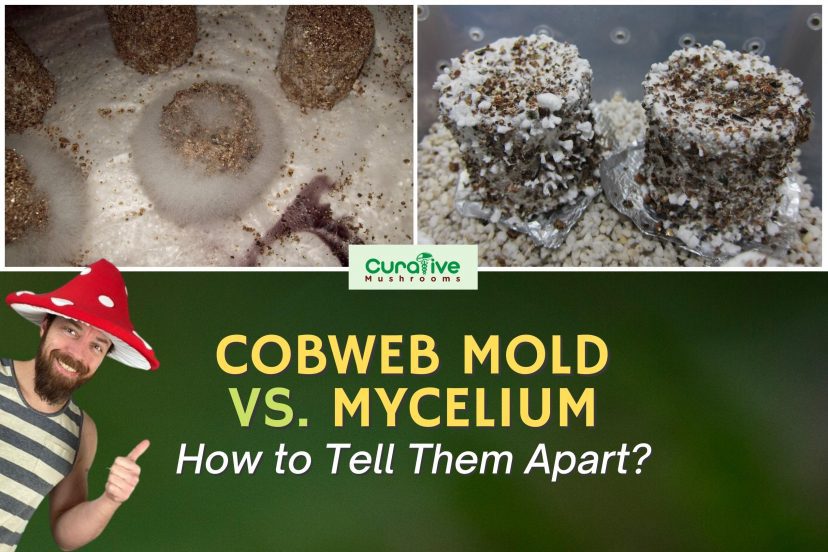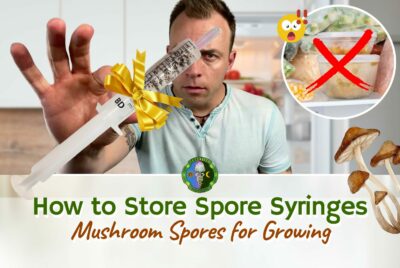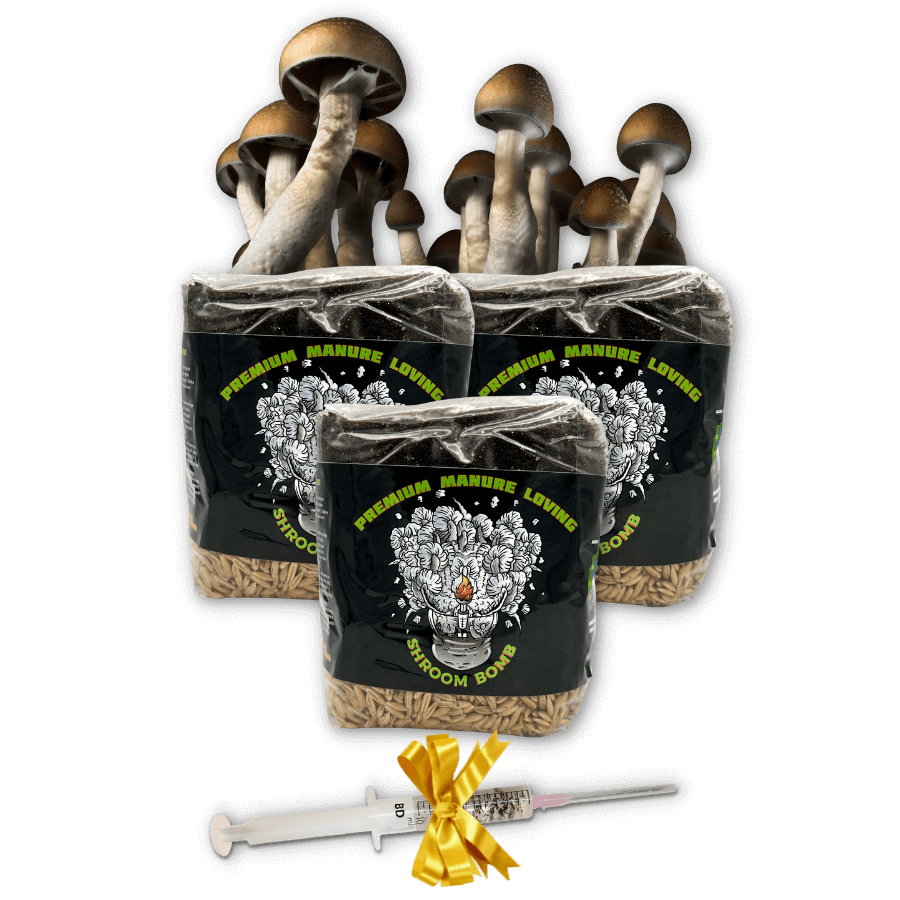Growing your own mushrooms at home can be a transformative experience, and if you're looking to…
What Is Cobweb Mold and How to Get Rid of It | Cobweb Mold vs Mycelium

How do you tell the difference between cobweb mold vs. mycelium? Well, different mold species are our biggest competitors when it comes to cultivating mushrooms, but getting to know cobweb mold is a priority.
Firstly, molds are a type of fungi that grows in multicellular filaments called hyphae. They thrive anywhere they can find moisture and warmth, so they can indeed thrive in your grow bag.

Cobweb Mold (Hypomyces rosellus, formerly Dactylium dendroides) is the most common type of (impostor) mold that will compete with your mycelium.
This mold grows on the surface of your mushroom block; it thrives in environments with still air, very little oxygen, and high humidity.
Often, it occurs in the last days of incubation. That is when the mycelium has fully colonized the substrate) or right before the fruiting stage.
1. Cobweb Mold vs. Mycelium: How to Identify

Cobweb Mold has a grayish color and is stringy or puffy, literally looking like… you guessed it right—a spider’s cobweb! It is a type of growth that covers your substrate bed.
Frequently, it can be tricky to identify because of its similarity in appearance to the mushroom mycelium.

You can tell them apart by observing the color and speed of growth. Take note that mushroom mycelium is bright white and will appear much brighter in days.
In contrast, cobweb mold appears dull and will look significantly darker (grayish) in 24 hours.
So if a puffy growth (a mass that forms spider web type) in your kit appears out of nowhere, that’s more likely cobweb mold.
It has no odor, so no; don’t try to identify it by sniffing as it can trigger allergic reactions. To be safe, wear a mask and gloves when handling any mushroom contamination.

In addition, if you added a casing layer, cobweb mold growth would usually be above it.
The casing layer is an extra material like “peat,” which is added on top of your substrate block once it has fully colonized.

There’s a white branching mass extending from my substrate bed. Is it cobweb mold?
No, it is NOT cobweb mold nor any type of contamination. This branching mass is called aerial hyphae, which is normal.
They form into hyphal knots, a collection of hyphae. Then, hyphal knots will begin to form the primordia, those white bumps you see before the pinning stage.
2. You are now sure it is mycelium instead of mold? You better take precautionary steps to prevent mold contamination.
One of the main reasons cobweb mold hits a substrate is poor air exchange. So the best way to prevent cobweb mold is to improve Fresh Air Exchange (FAE).
Fresh Air Exchange, a.k.a. airflow, refers to the amount of fresh air moving around the grow kit.
(If you’re in the fruiting phase and you decide to transfer to a monotub or fruiting chamber, you may fan the monotub or fruiting chamber six or ten times a day to encourage FAE.)
If your substrate is not yet ready to be transferred to the monotub, you may make a tiny incision through the grow bag’s plastic to expose a layer of the substrate.
3. But what to do when it contaminates your mushroom? Here’s how to treat it.

Unfortunately, if the cobweb mold contamination seems to cover the mushroom fruiting bodies already, the chance of saving your crop is thin.
However, you can still try your best to save it. Just be sure to separate your contaminated fruiting block from the healthy ones.
Hydrogen Peroxide ( H2O2). To get rid of it, mushroom growers advise spraying the surface mold with 3% hydrogen peroxide.
That means it’s 97% distilled water and 3% hydrogen peroxide. So for a 100mL bottle, that’s 97mL water and 3mL peroxide.
You do not need to create your solution since you can buy over-the-counter. Hydrogen peroxide is available at most drug stores and online stores. They are sold in concentrations of three to 12 percent.
How to apply the solution? You may use a clean spray bottle. Simply spray the whole surface area of your infected substrate or fruiting block with the solution.
From there, watch with satisfaction how that naughty mold dissolves right before your eyes! Just like dissolving a gray cotton candy. Hah!

Wrapping Up
Cobweb mold grows right above the substrate’s surface, from dull white to gray, for as short as 24 hours. On the other hand, mushroom mycelium takes days to double in growth which looks like heavenly white, thread-like roots embedded in the substrate.*
The ideal growing condition for mushrooms invites some other types of molds like:
- Green mold (Trichoderma)
- Black mold (Stachybotrys)
- Orange-red bread mold (Neurospora)
- Black bread mold, a.k.a pin head mold (Rhizopus)









Finally. Thank you so much. It wasn’t that hard was it? To try and help a guy out. You’re awesome. I guess I will try one more time
It’s our pleasure, Bob!:) Growing mushrooms as a newbie can be challenging, but it can get more manageable with the right supplies and with practicing proper sterile methods.
You may check out our product offers here.
Manure-Loving Grow Bags➡️ https://offer.curativemushrooms.com/new-grow-bags
Spore Syringes➡️ https://offer.curativemushrooms.com/robert-syringes-mycology-guide-1
All-In-One Grow Kit➡️ https://offer.curativemushrooms.com/super-special-offer-new-coupon-2
If you need further assistance, please reach out to our Customer Support team➡️ support@curativemushrooms.com.